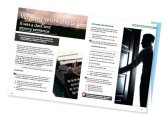Schools must procure technology in a strategic way to ensure that they achieve the full benefits of the tools they deploy. By considering six key questions, teachers can ensure that any new technology is implemented in a coherent way to deliver specific benefits, while avoiding the perils of platform proliferation.
1) Whom does this technology benefit?
It’s easy to see a new app as a useful sticking plaster to solve a specific problem, but this mindset only encourages proliferation. A utilitarian approach is preferable, selecting technologies that bring the greatest benefit to the greatest number. Platforms should be assessed for multiple benefits, not just in the classroom, but also how they improve school administration and communications with parents.
2) Do you have buy-in from all parties?
Allowing teachers to introduce their own tools is a recipe for chaos. Any new technology must be assessed for the benefit that it will bring to the school as a whole, so you must give careful consideration whether the technology is likely to be universally adopted by users, how much training will be needed, and how to communicate the benefits of the new system to sceptical parties.
3) Is your existing infrastructure up to scratch?
New platforms needs to integrate seamlessly into schools’ existing IT estate, and must provide a function for centralised administration. What’s more, you need to check that your infrastructure is capable of supporting the new platform, and how it affects the school’s hardware purchasing cycle.
4) What does this technology replace, and what functions overlap with existing systems?
Give with one hand, take with the other. Technology procurement should replace and, ideally, consolidate existing systems. The goal should always be to simplify the school’s IT estate, getting rid of obsolete systems and replacing them where possible with cross-school platforms with multiple functions.
5) Where and how has this technology been used successfully in schools?
It’s always a good idea to get user feedback before making a purchase, so schools should talk to other institutions that have used the technology. They will be able to give impartial advice on everything from troubleshooting the implementation, to achieving user buy-in, to innovative ‘off-the-label’ uses for the tool in question.
6) Who’s in charge of the procurement project?
The best technologies are implemented neither from above nor from below, but as a partnership between all parties. Nevertheless, it’s important that a single group is ultimately responsible for procurement, implementation and administration. A good mixture will include the Head of IT, the network manager, the bursar and an academic representative such as the DoS, who will make the decisions - but who will also involve teachers, pupils, parents, and anyone else who stands to benefit from the latest school technology.
Rob Eastment has been in working in education since 1998, teaching in a range of different schools before joining Firefly in August 2014. He has been training teachers in ICT since 2000 with a particular focus on its application as a classroom tool. As Head of IT and then as a Deputy Head, he was responsible for digital strategy within schools, looking at developing the integration of technology in the learning process. Rob is an advocate of the Growth Mindset and has worked with the Flipped Learning model in schools. He holds a BA Ed from Exeter University and an MEd from Buckingham.










